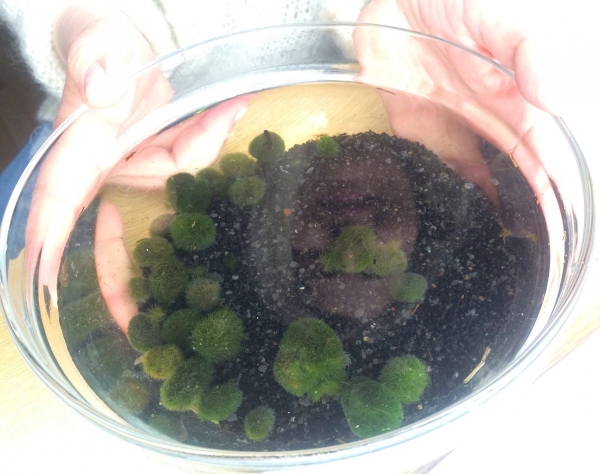The ecosystem of Lake Mývatn in North Iceland is rebounding says Árni Einarsson, the director of the Mývatn Nature Research Center in an interview with local newspaper Morgunblaðið.
Last year a research by American graduate students indicated that plant life in Mývatn was about to disappear leading to the collapse of the entire food-chain in the lake, as the algae growth at the bottom of the lake the feeds insects and midges, which in turn are eaten by the birds on the lake.
The ecosystem of the lake is known to go through cycles of decline and growth with periodic collapses. However last year’s collapse was larger than anything seen previously. This spring signs of recovery appeared when large quantities of small marimo or moss balls (a rare growth of balls of green algae) washed ashore along the shores of the lake.
Marimo is only found in a handful of lakes around the world. It used to be plentiful in Mývatn and one of its chief characteristics but had until this spring has not been found in the lake since 2013 and scientists feared gone extinct.

Mývatn lake derives its name from the midges (black flies) which have historically formed large swarms at the lake, as Mývatn literally translates as Midge-lake. Last summer the midge population at the lake collapsed but returned with a vengeance this summer, which is a good sign for the ecosystem.
This is very welcome news as Lake Mývatn and its surrounding is one of Iceland’s most spectacular areas.
The ecosystem of Lake Mývatn in North Iceland is rebounding says Árni Einarsson, the director of the Mývatn Nature Research Center in an interview with local newspaper Morgunblaðið.
Last year a research by American graduate students indicated that plant life in Mývatn was about to disappear leading to the collapse of the entire food-chain in the lake, as the algae growth at the bottom of the lake the feeds insects and midges, which in turn are eaten by the birds on the lake.
The ecosystem of the lake is known to go through cycles of decline and growth with periodic collapses. However last year’s collapse was larger than anything seen previously. This spring signs of recovery appeared when large quantities of small marimo or moss balls (a rare growth of balls of green algae) washed ashore along the shores of the lake.
Marimo is only found in a handful of lakes around the world. It used to be plentiful in Mývatn and one of its chief characteristics but had until this spring has not been found in the lake since 2013 and scientists feared gone extinct.

Mývatn lake derives its name from the midges (black flies) which have historically formed large swarms at the lake, as Mývatn literally translates as Midge-lake. Last summer the midge population at the lake collapsed but returned with a vengeance this summer, which is a good sign for the ecosystem.
This is very welcome news as Lake Mývatn and its surrounding is one of Iceland’s most spectacular areas.






